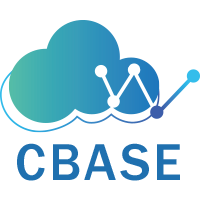
Biography: Prof. Ali Selamat is an academician at Malaysia Japan International Institute of Technology (MJIIT), Universiti Teknologi Malaysia (UTM), Kuala Lumpur, Malaysia. An academic institution established under the cooperation of JICA (Japanese International Cooperation Agency) and Ministry of Higher Education Malaysia (MOHE) to provide Japanese-oriented engineering education in Malaysia (http://mjiit.utm.my/). Currently he is serving as the Dean for the institute. He is also current a chair of IEEE Computer Society, Malaysia Section.
Speech title: RECENT RESEARCH ON DETECTION OF VULNERABLE PLAQUE IN CORONARY ARTERY ULTRASOUND IMAGES USING MACHINE LEARNING ALGORITHMS
Abstract: Atherosclerotic plaque rupture is the most common mechanism responsible for the majority of sudden coronary deaths. The precursor lesion of plaque rupture is thought to be a thin cap fibroatheroma (TCFA) or “vulnerable plaque”. Virtual Histology Intravascular Ultrasound (VH-IVUS) image is clinically available for visualizing this colour coded coronary artery tissue. However, it has limitations in providing clinical relevant information for identifying the vulnerable plaque. In this talk, we discuss on the recent research on the detections of vulnerable plaque in virtual histology intravascular ultrasound images using machine learning algorithms. We proposed how to improve the identification of TCFA in VH-IVUS image by developing a set of algorithms for segmentation, feature extraction, and plaque type classification to accurately identify vulnerable plaque. To develop the algorithms two approaches comprising of optimization and semi-supervised models were adopted. Besides, K-means and Fuzzy c-means (FCM) were improved by Particle Swarm Optimization (KMPSO and FCMPSO). Next, semi-supervised models were developed by means of hybrid FCM with k-Nearest Neighbor (FCM-kNN), minimum Euclidean distance (FCM-mED), and Support Vector Machine (FCM-SVM). For the extraction, two algorithms were adopted: Close Lumen Tracing (CLBT) and Open Lumen Tracing (OLBT) to extract luminal features. In addition, three algorithms were explored for extracting significant features from plaque component consisting of Extracting Confluent Component (ECC), Necrotic Core Layering (NCL), and Plaque Burden Assessment (PBA). For plaque type classification, the extracted features from VH-IVUS were integrated with textural features to enhance the efficiency.